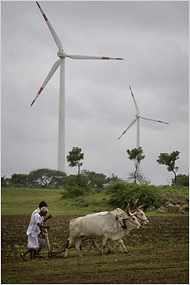 Mail is a small overall contribution to a consumer’s environmental footprint. After all, according to a Pitney Bowes study on the environmental impact of mail, paper is increasingly manufactured from renewable resources, paper companies are increasingly running on renewable energy and running a single refrigerator for a year creates the same carbon footprint of delivering 5,000 letters.
Mail is a small overall contribution to a consumer’s environmental footprint. After all, according to a Pitney Bowes study on the environmental impact of mail, paper is increasingly manufactured from renewable resources, paper companies are increasingly running on renewable energy and running a single refrigerator for a year creates the same carbon footprint of delivering 5,000 letters.
At the same time — I would counter — direct mailers, catalogers, and others who produce massive volumes of mail can make a huge environmental difference (especially corporately) by making small, incremental changes individually. Simply because of those volumes. Once we start making changes at the source, the impact of the effort is magnified.
Here are some interesting nutshells from the report:
- Direct mail accounts for about 2% of the total tonnage of the US municipal waste stream, and of that, almost 39% of direct mail in the US was recycled in 2006.
- The distribution of letter mail generates, on average, about 20 grams of CO2 per letter delivered.
- A survey of more than a dozen studies shows that the indicative range of CO2 emissions associated with the upstream mail piece creation process is about 0.9 – 1.3 grams of CO2 per gram of paper.
Because paper and electronic communications are intertwined in the life cycle of mail, Pitney Bowes emphasizes that an attempt to substitute electronic communications simply represents a redistribution of the total carbon footprint, rather than eliminating it. In my view, this is a warning shot across the bow for people who think they can “go green” simply by replacing mail with email and other electronic communications.
The good news is, the mailing industry is investing in programs and initiatives to further reduce the environmental impact associated with all six life cycle stages of letter mail. The white paper makes a variety of suggestions for starting points for additional research and monitoring in order to continuously reduce the carbon footprint of the mailing industry.
The paper examined available data sources to determine the indicative range of CO2 emissions generated by various stages throughout the life cycle of physical letter mail.
Six life cycle stages of letter mail were identified: (1) mail design; (2) manufacturing the writing paper and envelope; (3) production of the letter; (4) distribution of the letter; (5) use; and, (6) disposal. The company also examined some of the mail’s environmental impact beyond CO2 emissions, such as the actual rates of net forest deforestation and the accumulation of waste mail pieces in landfills.
A copy of the white paper can be accessed here.
Like this post? See all my “Greening Print Marketing” posts.
Photo courtesy of Pitney Bowes, “The Environmental Impact of Direct Mail”



Great post! Look forward to reading your upcoming post. Keep them coming! web site marketing
Great post! Look forward to reading your upcoming post. Keep them coming! web site marketing